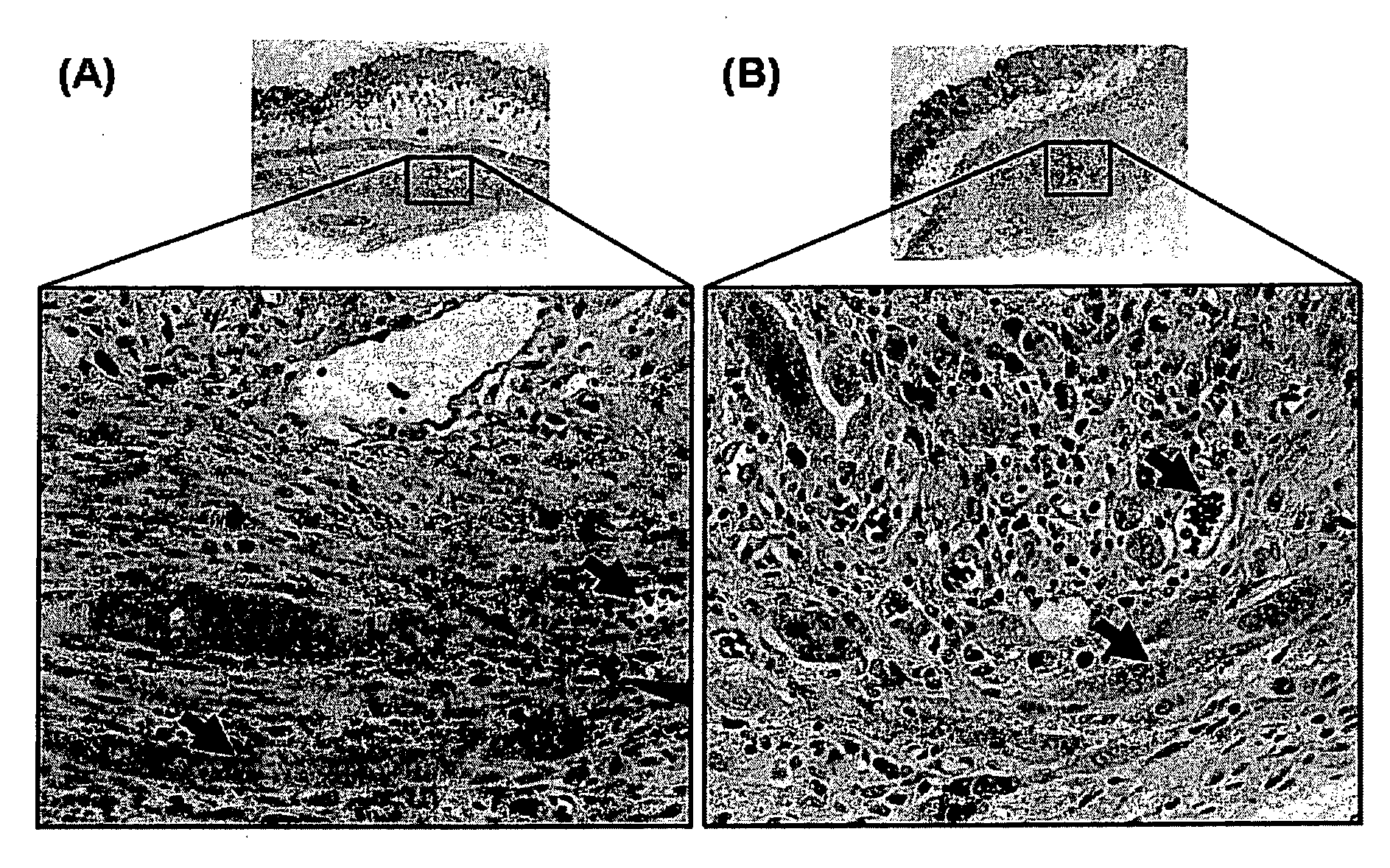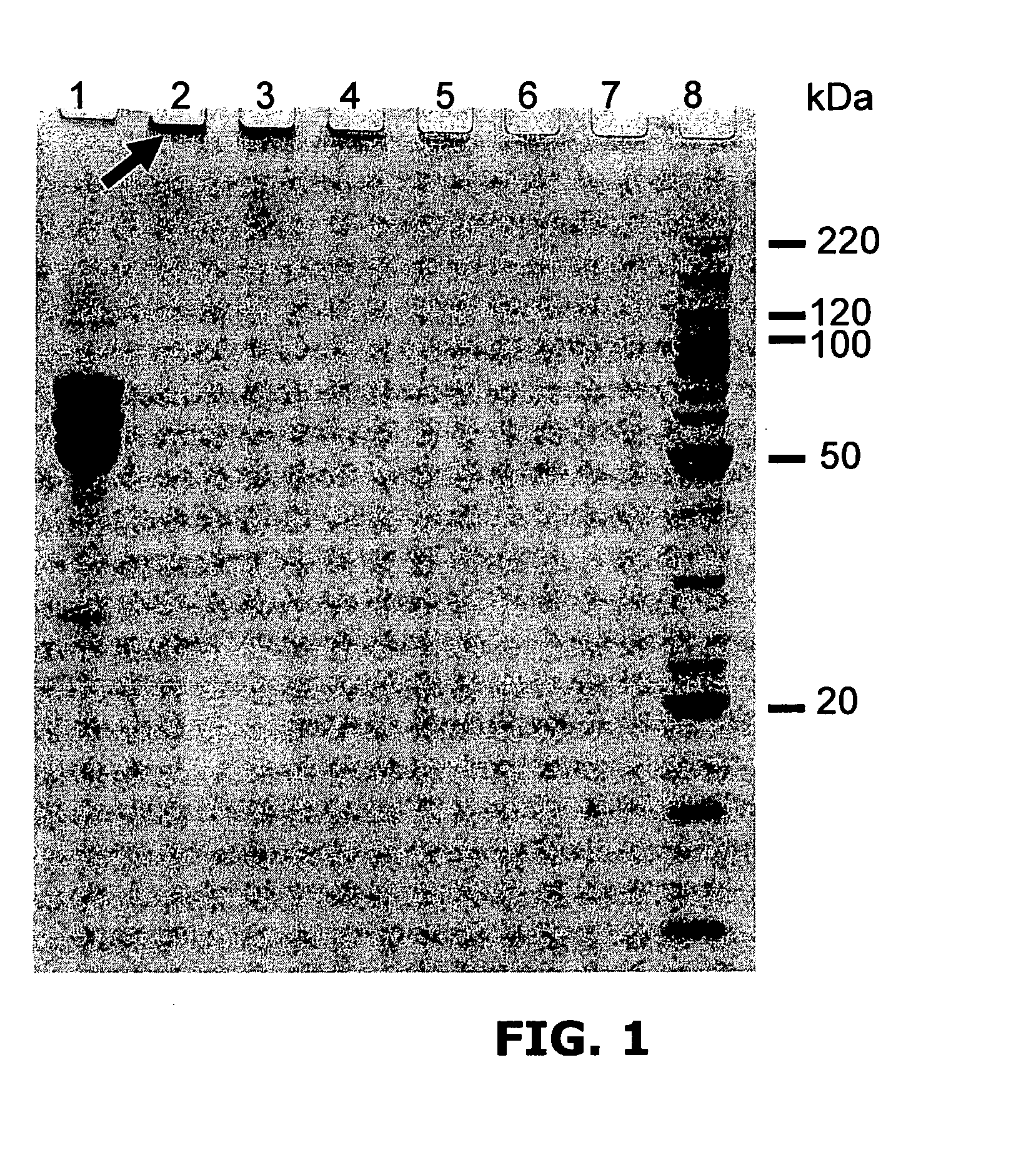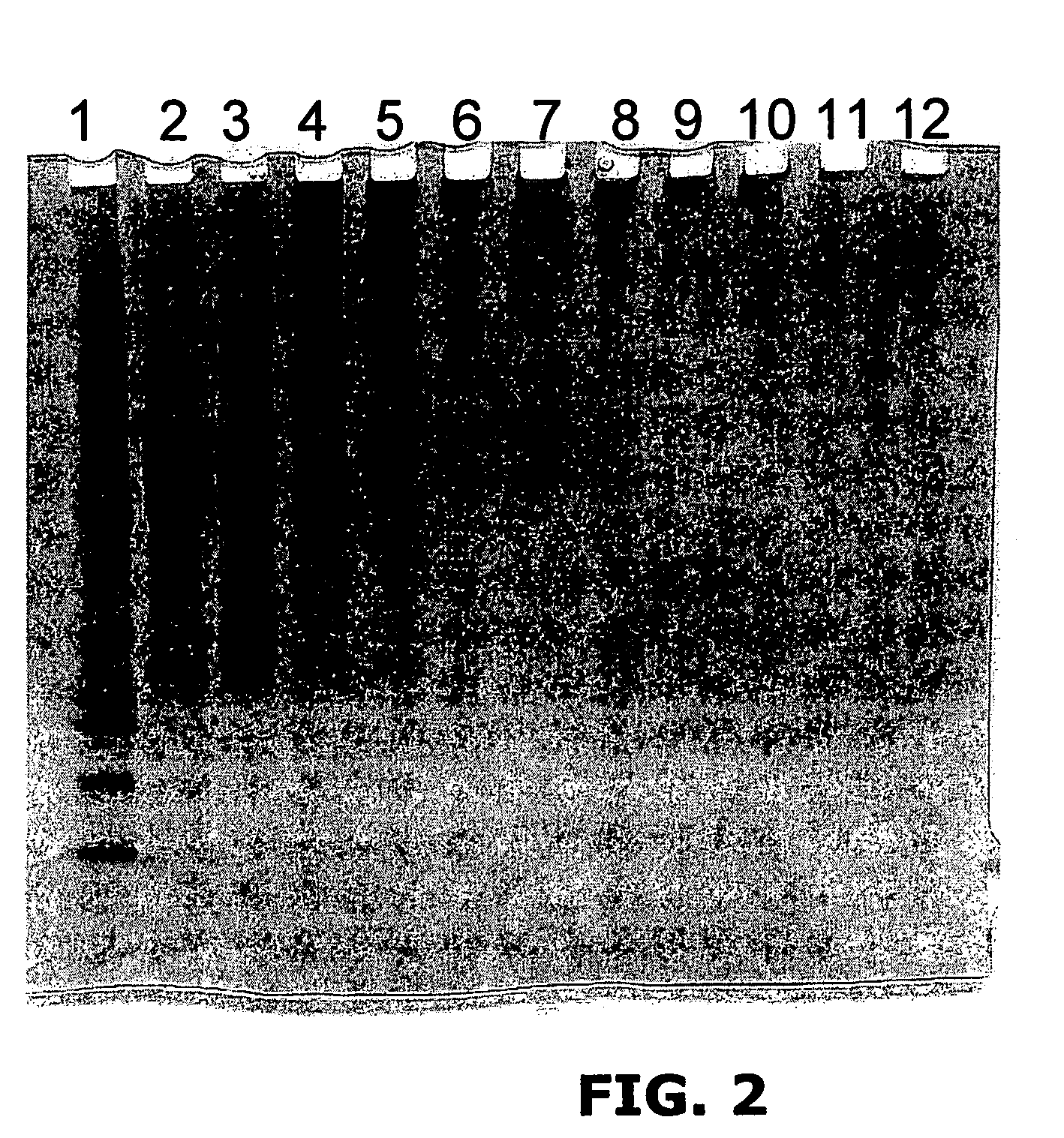Photoactivated crosslinking of a protein or peptide
- Summary
- Abstract
- Description
- Claims
- Application Information
AI Technical Summary
Benefits of technology
Problems solved by technology
Method used
Image
Examples
example 1
Photochemical Cross-Linking of Bovine Fibrinogen
[0219]A photochemical method was used to cross-link the soluble fibrinogen into a solid biomaterial and to effect the covalent cross-linking of the fibrinogen matrix to the proteins contained in the extracellular matrix surrounding the muscle tissue. Two small strips of bovine longissimus dorsi (LD) were dissected and the opposing surfaces coated in the sealant solution (200 mg / ml bovine fibrinogen was dissolved in PBS, with 2 mM [Ru(bpy)3]Cl2, 10 mM ammonium persulfate). Following 10 sec of irradiation, the two pieces of muscle were firmly attached. The light source chosen for the present study was a 600-W tungsten-halide source (2×300-W lamps; GE #38476). The spectral output showed a broad peak from 300 nm-1200 nm. Bovine fibrinogen (Fraction I, Sigma) (200 mg / ml) was dissolved in PBS, with 2 mM [Ru(bpy)3]Cl2, 10 mM ammonium persulfate) and photochemically cross-linked (600 W at 10 cm for 10 s).
example 2
Time of Light Exposure
[0220]Reactions contained 25 μg of bovine fibrinogen (Sigma); 2 mM [Ru(bpy)3]Cl2; 20 mM persulfate (Sodium salt) all in 25 μl PBS.
[0221]Reactions were exposed to 300 W incoherent light from Quartz Halogen dichroic source for 1, 2, 5, 10, 30 and 60 seconds all resulted in the formation of high molecular weight, cross-linked fibrinogen polymers (FIG. 1).
example 3
Effect of Concentration of [Ru(bpy)3]Cl2
[0222]Reactions contained 25 μg of bovine fibrinogen (Sigma); 20 mM persulfate (Sodium salt) all in 25 μl PBS. Reactions were exposed to 300 W incoherent light from Quartz Halogen dichroic source for 1 min (FIG. 2) showing that the cross-linking reaction occurs across a range of [Ru (bpy)3]Cl2 concentrations.
PUM
| Property | Measurement | Unit |
|---|---|---|
| Heat | aaaaa | aaaaa |
Abstract
Description
Claims
Application Information
 Login to View More
Login to View More - R&D
- Intellectual Property
- Life Sciences
- Materials
- Tech Scout
- Unparalleled Data Quality
- Higher Quality Content
- 60% Fewer Hallucinations
Browse by: Latest US Patents, China's latest patents, Technical Efficacy Thesaurus, Application Domain, Technology Topic, Popular Technical Reports.
© 2025 PatSnap. All rights reserved.Legal|Privacy policy|Modern Slavery Act Transparency Statement|Sitemap|About US| Contact US: help@patsnap.com



